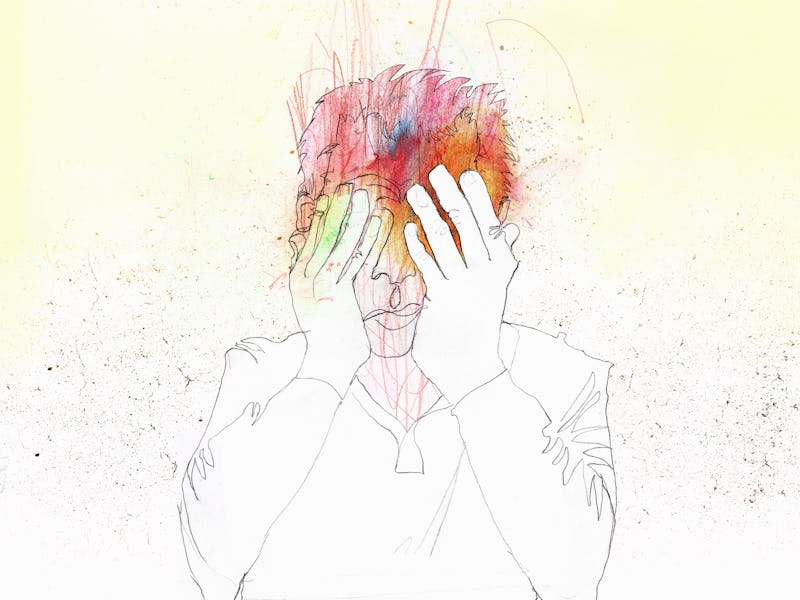Study exposes anxiety's roots in the brain -- and points way to treatment
"We are getting closer to defining the cells and molecules producing or preventing anxiety."

Scientists are getting closer to tracing the root of anxiety back to its core neurobiology. In October 2019, they discovered a population of cells in the brain that could hold the key to understanding the biology underlying the condition. And, if these cells can be targeted, the finding could one day lead to better anxiety treatments.
The discovery is described in a paper published October in Cell Reports. Researchers found that a kind of brain cell called Hoxb8-lineage microglia are associated with anxiety symptoms in mice. When these cells develop normally, mice don’t appear to have any anxiety symptoms. But when the cells don’t follow their traditional trajectory, mice tend to groom aggressively and show signs of anxiety that may be familiar to any human who has experienced it.
This is #15 on Inverse’s list of 25 surprising lessons from 2019 for humans.
Study author Dimitri Traenkner explained that these cells are strong candidates for future anxiety treatments.
“The main positive aspect is that our study, and many recent studies done in other labs, show that we are getting closer to defining the cells and molecules producing or preventing anxiety,” Traenkner told Inverse at the time.
The abnormal development of Hoxb8-lineage microglia was related to anxiety symptoms in mice, and could lead to treatment for humans.
Microglia are the brains’ maintenance cells, tasked with looking for dangerous pathogens and destroying them.
Traenkner and his team found that Hoxb8-lineage microglia appear to “to suppress obsessive-compulsive and anxiety symptoms.” But that was only true if they followed their traditional development trajectory, which is guided by the Hoxb8 gene. When scientists knocked the gene out, the mice became so anxious that they ripped their own fur out.
All the knock-out mice were anxious, but in female mice, they found that the combination of estrogen and the gene mutation compounded anxiety symptoms.
"For people suffering from anxiety, this news should give hope.”
Even though this study was only done in mice, this sex-specific pattern may offer an underlying explanation for a wider trend found in humans, the scientists said.
National Institute of Health statistics show that, in adolescents, the prevalence of any anxiety disorder is higher for girls than it is for boys. That was the case in this mouse study too — female hormones appeared to exacerbate anxiety symptoms caused by this abnormal cell development.
The study also points to a potential therapy to combat anxiety — stemming its development in the brain before it even starts to manifest behaviorally.
“For people suffering from anxiety, this news should give hope,” Traenkner said.
As 2019 draws to a close, Inverse is revisiting 25 striking lessons for humans to help maximize our potential. This is #15. Some are awe-inspiring, some offer practical tips, and some give a glimpse of the future. Read the original article here.